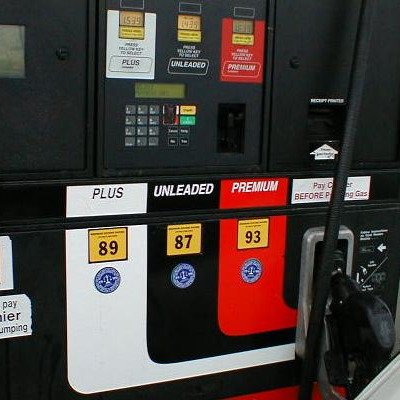Rebounding Oil Prices Refinery Maintenance Cause Retail Prices to Climb

(PORTLAND, Ore) — “Many drivers are noticing spikes in gas prices for the first time in months. The national average for regular unleaded jumps 12 cents this week to $2.19 a gallon. Oregon’s average shoots up 13 cents to $2.26 a gallon. The national average had fallen for a record 123 days before beginning to rise again on January 27. Oregon’s average fell for 69 consecutive days before increasing again on February 3,” says AAA Oregon/Idaho Public Affairs Director Marie Dodds. “Refinery issues and higher crude oil prices mean gas at $2 a gallon is quickly moving into the rearview mirror. Still, prices remain near six-year lows with the national and Oregon averages at their cheapest prices since May 2009.”
February typically marks the start of seasonal refinery maintenance in preparation for the busy summer driving season. Refineries usually schedule maintenance during the first several months of the year when demand is relatively low, which can lead to decreased production and supplies. Retail pump prices typically increase 30 to 50 cents during the spring run-up. Over the last five years, gas prices in February have risen by an average of 22 cents per gallon.
A strike by the United Steelworkers union is causing additional market uncertainty this week because approximately 5,200 members have walked off their jobs at refineries and chemical plants responsible for processing more than 10 percent of U.S. petroleum products. While this is the first nationwide strike at U.S. oil refineries since 1980, the work stoppage is not expected to have a significant impact on production in the short-term because refineries continue to operate. While news of the strike has reportedly led to higher wholesale gasoline prices, abundant petroleum supplies may provide both refiners and unions with a chance to reach an agreement before there is a larger impact on consumers.
On the whole, drivers are paying more to refuel their vehicles compared to one week ago. Oregon is one of 48 states and Washington D.C. where week-over-week prices are higher. Oregon is one of 32 states where consumers are paying a dime or more per gallon with the largest increases in Ohio (+19 cents) and California (+19 cents). Hawaii (-6 cents) and Alaska (-4 cents) are the only two states to see price declines.
The majority of U.S. drivers are continuing to enjoy month-over-month savings. Oregon is one of 29 states and Washington, D.C. where consumers are paying less than a month ago to fill up their tanks. On the other end of the spectrum, motorists in 21 states are paying more at the pump. The price has jumped by a dime or more per gallon in 11 states versus one month ago, with the largest increase seen in Michigan (+26 cents).
Drivers universally continue to experience yearly savings at the pump. With the exception of Nevada (-99 cents) and Hawaii (-98 cents), the price is down by $1 or more per gallon in every state and Washington, D.C. Oregon drivers are paying $1.01 a gallon less than a year ago.
An oversupplied global market is expected to keep the price of crude relatively low for at least the first half of 2015. Nonetheless, the global market’s overall volatility is at a six-year high and prices have seesawed, often daily, in response to a number of factors that are putting pressure on the balance between supply and demand. High-cost production countries continue to reassess their overall production goals, and Saudi Arabia is currently maneuvering to protect its market share by adjusting prices to various countries, including Asia and the United States.
This past week West Texas Intermediate traded between the high $40s and low $50s per barrel, reflecting the global market’s volatility. At the close of Friday’s formal trading on the NYMEX, WTI was up $1.21 to settle at $51.69 per barrel. At Monday’s close, WTI settled up $1.17 (2.21 percent) to $52.86 per barrel. Today WTI is trading around $50 a barrel, compared to $53 a week ago. Crude prices are up about 10 percent over the last month and are about $47 lower than a year ago.
For the 14th week in a row, there are no states with an average price for regular unleaded at or above $4 a gallon. Forty-nine states and Washington D.C. have averages below $3 per gallon, same as last week. Five states are below $2 a gallon, down from 20 a week ago.
Hawaii has the most expensive gas in the country for the 120th consecutive week at $3.05, followed by California at $2.65 (up 19 cents and up from third last week), Alaska at $2.62, New York at $2.43 and the District of Columbia at $2.42. Oregon is 12th up from 14th last week at $2.26 (up 13 cents). Washington is 13th for the second consecutive week at $2.25 (up 11 cents). Idaho has the cheapest gas in the nation for the second week in a row $1.89 a gallon (up three cents).
Diesel prices are also moving higher. The national average adds a penny to $2.81 a gallon. Oregon’s average jumps a dime to $2.72. Diesel is at or above $4 a gallon in just one state, same as last week. Hawaii is most expensive at $4.50, followed by New York at $3.25, Connecticut at $3.19, Pennsylvania at $3.13 and Alaska at $3.12. California is ninth for the fourth consecutive week at $3.04 (up nine cents). Washington is 18th up from 29th last week at $2.82 (up six cents). Idaho is 34th down from 32nd last week at $2.75 (same price as last week). Oregon is 35th up from 43rd last week. A year ago, the national average for diesel was $3.93 and Oregon's was $3.87.
Source: AAA of Oregon/Idaho



